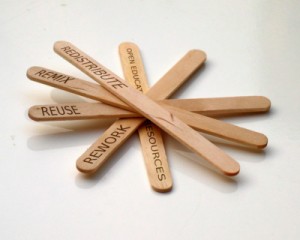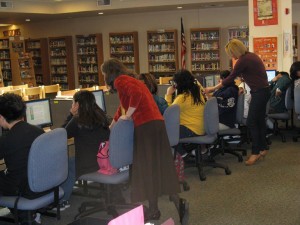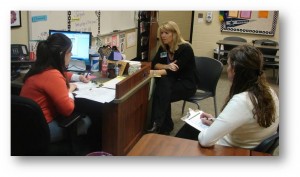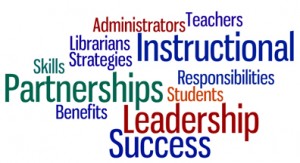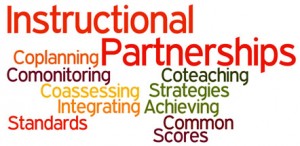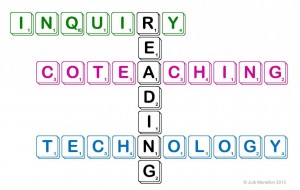 “Productive civic engagement requires knowledge of the history, principles, and foundations of our American democracy, and the ability to participate in civic and democratic processes. People demonstrate civic engagement when they address public problems individually and collaboratively and when they maintain, strengthen, and improve communities and societies. Thus, civics is, in part, the study of how people participate in governing society” (NCSS 2013, 31).
“Productive civic engagement requires knowledge of the history, principles, and foundations of our American democracy, and the ability to participate in civic and democratic processes. People demonstrate civic engagement when they address public problems individually and collaboratively and when they maintain, strengthen, and improve communities and societies. Thus, civics is, in part, the study of how people participate in governing society” (NCSS 2013, 31).
The Center for Civics Education (@CivicEducation) was one of fifteen organizations that collaborated on the College, Career, and Civic Life (C3) Framework for Social Studies State Standards (NCSS 2013). According to their website, “The Center is dedicated to promoting an enlightened and responsible citizenry committed to democratic principles and actively engaged in the practice of democracy in the United States and other countries” (http://www.civiced.org/about/37).
The Center started in 1965 at the University of Southern California. Researchers have conducted studies related to all five of the projects hosted on this website. The Center’s “Promoting the Principles and Practice of Democracy” video is a worthwhile introduction to their work. Educators who are preparing to connect curriculum with #Election2018 will want to explore the resources available on their site.
The site offers five programs. I have reviewed “We the People” and “Project Citizen” below. The “School Violence Prevention Demonstration Program” provides professional development support for educators who are teaching the “We the People” and “Project Citizen” programs in their classrooms. The James Madison Legacy Project is focused on educator professional development, and Civitas International involves learners in countries around the world.
We the People
This program offers textbooks that include six units of study at three instructional levels: upper elementary, middle, and high school. You can download a two-page summary of the program. If your school or district has adopted these texts or is considering a new social studies/civics adoption, these resources may be important to your classroom-library collaboration. “We the People” videos offer an overview of the program and its impact on student learning.
These are the units in the textbooks:
Unit One: What Are the Philosophical and Historical Foundations of the American Political System?
Unit Two: How Did the Framers Create the Constitution?
Unit Three: How Has the Constitution Been Changed to Further the Ideals Contained in the Declaration of Independence?
Unit Four: How Have the Values and Principles Embodied in the Constitution Shaped American Institutions and Practices?
Unit Five: What Rights Does the Bill of Rights Protect?
Unit Six: What Challenges Might Face American Constitutional Democracy in the Twenty-first Century?
Project Citizen
This civic education program, geared to middle, secondary, and post-secondary students and youth or adult groups, offers open education resources. The goal of Project Citizen is to promote “competent and responsible participation in state, local, and federal government.” The site offers lessons/units of instruction. The Level 1 lessons are for students in grades 5-8. Level 2 lessons are for secondary and post-secondary students. Lessons are aligned with the Common Core Standards in History/Social Studies.
For example, the four lessons in the “9/11 and the Constitution” unit involve students in reflecting on U.S. ideals and answering the question: “What does it mean to be an American?” The subsequent lessons involve students in learning from various founding documents and completing a questionnaire about how well our country is actualizing these ideals. Students also administer the questionnaire to adults in their homes and communities. The unit concludes with students comparing and discussing the similarities and differences in people’s responses. Finally, students compose an individual or small group statement and cite evidence on how well the American government is fulfilling its purposes as set forth in the Preamble.
As with all published lesson plans and units of study, educators will want to adapt instruction for their students and the context in which the lessons are presented. For #Election2018, students could make connections by examining local, state, and national candidates’ statements to analyze them for “U.S. ideals” as expressed in the Preamble of the Constitution or other governmental documents. They could also examine the prior voting records and statements made by incumbent candidates and determine whether or not the candidates’ statements and actions are consistent. Students could then debate the merits of various candidates using the evidence they found in the candidates’ campaign materials and/or voting records.
Another component of the site involves learners in working together as a class or extracurricular group to identify and study a particular public policy issue. The final product of this project-based learning opportunity is a portfolio that may be presented to other students, civic groups or community organizations, or policymakers.
Both the Center for Civics Education and the Stanford History Education Group (reviewed last week) have resources to offer educators who are building students’ background knowledge, information-seeking and critical thinking skills in order to connect school-based curriculum with #Election2018.
Works Cited
Center for Civics Education. 2018. http://www.civiced.org
National Council for the Social Studies. 2013. College, Career, and Civic Life (C3) Framework for Social Studies State Standards. https://www.socialstudies.org/sites/default/files/c3/C3-Framework-for-Social-Studies.pdf
Image Credit:
amberzen. “Vote Button.” Creative Commons CC0. https://pixabay.com/en/vote-button-election-elect-1319435/

